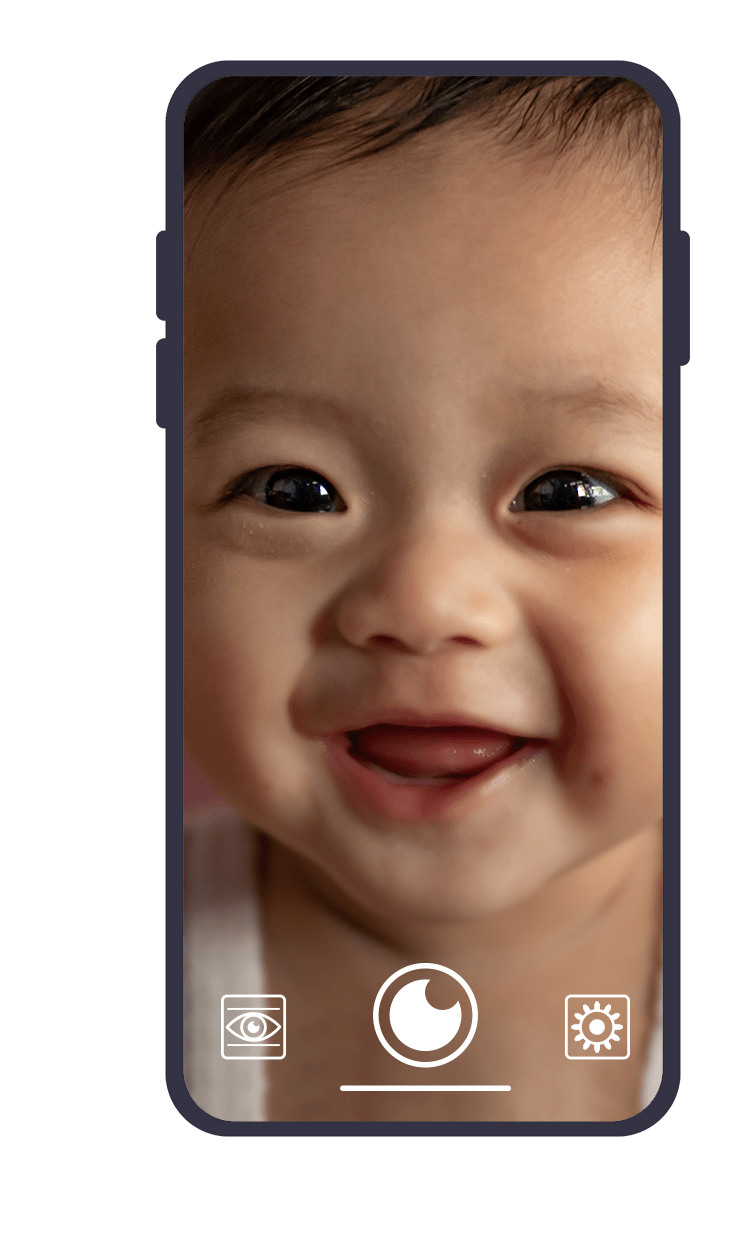How it works?
The app modifies the flash and camera settings of the smartphone to capture red reflex in the normal eye and white reflex in the affected eye.

Try it Free.

How to use MD EyeCare step by step
MD EyeCare is designed to be user-friendly. It can be easily downloaded and used by anyone, anywhere in the world. Please watch the video tutorial and follow these simple steps for a correct result.
Step 1
Choose a dark room or turn off the lights. Position yourself 3 feet away from the child, parallel to his face and eyes.
Step 2
Point the camera to the child’s face and focus. Wait for the app guide to tell when you are at the right distance and the darkness of the room is OK. And shoot!
Step 3
Create or login to your account, save the photo and upload it to the MD EyeCare Cloud, so it can process it and tell you if you should visit a specialist.



What eye disorders can it detect?
Leukocoria or white pupil reflex in photographs,
could be the first sign of several eye disorders that could potentially affect a child’s eyesight, quality of life and even threaten their life. Some of these eye disorders are:
Retinoblastoma
Retinoblastoma is a type of eye cancer, most common in infants and very your children. It usually manifests itself when the child is between 6 and 18 months old. Because such young children do not express vision loss or discomfort, diagnosis is usually made several months or years later, when it is sometimes too late to preserve the eye, and even their lives are at risk.
(1 in 10.000 newborns is diagnosed with retinoblastoma)Vices of Refraction
They are changes in the way the eye focuses.
Myopia
A nearsighted person sees near objects clearly, but from a distance they look blurry. Myopia is a condition that occurs in people who have large diameter eyeballs or corneas with excessive curvature. Usually squinting tends to make distant objects appear sharper.
Hyperopia
Most children are farsighted at birth (physiological hyperopia), a defect that is corrected as the eye develops.
A farsighted person can clearly see objects from afar, but at close range they seem blurry. Hyperopia is an eye disorder that occurs when the diameter of the eyeball is smaller than normal or the cornea is too flat. If it’s not detected and treated early, it can cause headaches and/or eyestrain.
Untreated childhood hyperopia can cause strabismus (misalignment of the eyes) and amblyopia (also called lazy eye). Farsightedness is easily corrected by using glasses or contact convergent.
Astigmatism
In these cases, the cornea is abnormally curved, causing blurred vision. Astigmatism makes it difficult to see fine details, either close or distant.
The cause for astigmatism is unknown. It’s usually present since birth and often occurs along with nearsightedness (myopia) or farsightedness (hyperopia).
In children, uncorrected astigmatism in only one eye may cause amblyopia (weakness or decrease in vision).
Treatment usually involves the use of eyeglasses or contact lenses.
Strabismus
It is the loss of parallelism between the eyes. This prevents both eyes from focusing on the same point in space at the same time, causing an incorrect binocular vision, which may adversely affect depth perception.
When strabismus is congenital or develops in infancy, it can cause amblyopia, a condition in which there is no proper development of neurological structures responsible for vision.
When strabismus is corrected in adulthood, it cannot however correct amblyopic vision in that eye. Amblyopia is reversible during childhood and occasionally in adolescence, with the appropriate therapeutic measures. In the case of strabismus these usually mean patching therapy and eventually using glasses. In more severe cases, surgery might be advised.